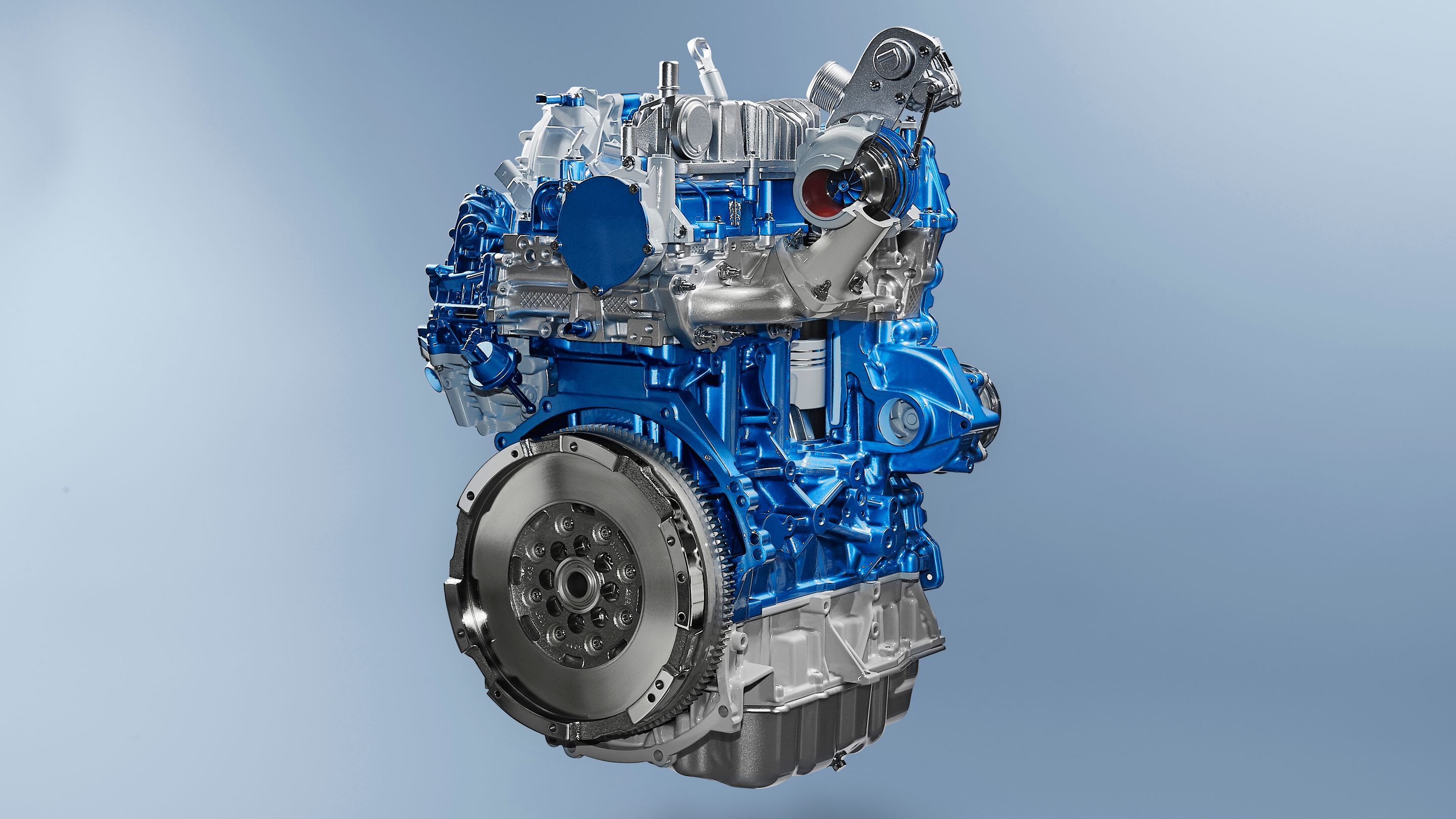Ford Europe->ke31 has broken news of an all-new 2.0-liter turbodiesel engine set to replace the current 2.2-liter DuraTorq four-cylinder in several commercial vans,->ke1149 while being prepared to power future passenger cars. Piggybacking off the recognition of the EcoBoost brand, Ford is calling the turbodiesel the EcoBlue.
The engine is said to be more efficient, cleaner, and more powerful than the outgoing DuraTorq. It will meet or exceed the stringent Euro 6 emissions standards thanks to a urea injection system within the exhaust. The 2.0-liter EcoBlue will come in various states of tune, ranging from 99 horsepower up to 237 horsepower. Likewise, torque will range from 266 pound-feet to 299 pound-feet.
“Ford’s EcoBoost created a new standard for petrol engines – smaller, more efficient with surprising performance. That same obsession to innovate for the customer is behind our new Ford EcoBlue diesel engine range,” said Jim Farley, chairman and CEO of Ford of Europe. “This new engine lifts fuel efficiency and reduces CO2 by over 10 percent in Transit, part of Europe’s best-selling commercial vehicle line-up, lowering costs for our customers.”
The EcoBlue engine will debut in the Transit and Transit Custom vans, but will eventually make its way to other products. Ford says a 1.5-liter version is in the works as well.
The engine utilizes a host of high-tech innovations, such as an offset crank that reduces piston side-load; a motorized and geared wastegate actuator for quicker response; a belt-in-oil design that drive the camshaft and oil pump; and an optimized combustion chamber said to be more efficient than any diesel Ford has ever made. The engine also features Ford’s first mirror-image inlet design for the intake manifold and a low-inertia turbo that features “rocket engine materials,” more technically called Inconel alloy that is resistant to extremely high temperatures.
The turbo’s compressor wheels are milled from a single piece of metal, with tolerances down to three microns, which is the size of a single bacterium. The engine is fueled by high-pressure fuel injectors that can deliver up to six injections per combustion event while being quieter than before. The
All this is done to make the engine more efficient, quieter, and longer lasting. Ford says it racked up more than 3.4 million miles on the engine during durability testing, which also included 250,000 mile of actual use by real-world customers.
Continue reading for more information
Why it matters
It’s not every day an automaker debuts a new family of engines, let alone an engine so critical to an automaker’s business. Ford’s commercial fleet will depend on this engine for years to come, so getting it right is essential. What’s more, Ford couldn’t have picked a more turbulent time to debut its new diesel engine. Volkswagen is still in deep trouble for its emissions-cheating software and will be paying billions in fines on top of billions in buy-backs of affected vehicles.
Granted, Ford had long been developing the EcoBlue engine when VW’s deselgate scandal broke in September of 2015, so canceling the program would have been unwise. Then again, European commercial fleets rely on compact diesel engines every day, so developing a cleaner, more reliable replacement was critical – especially with the looming Euro 6 standards taking place in September of 2016.
All that aside, it’ll be fun to see how widespread the EcoBlue engine is utilized. Hopefully the U.S. will even get in on the action – perhaps in the long-rumored Ford Ranger pickup.

